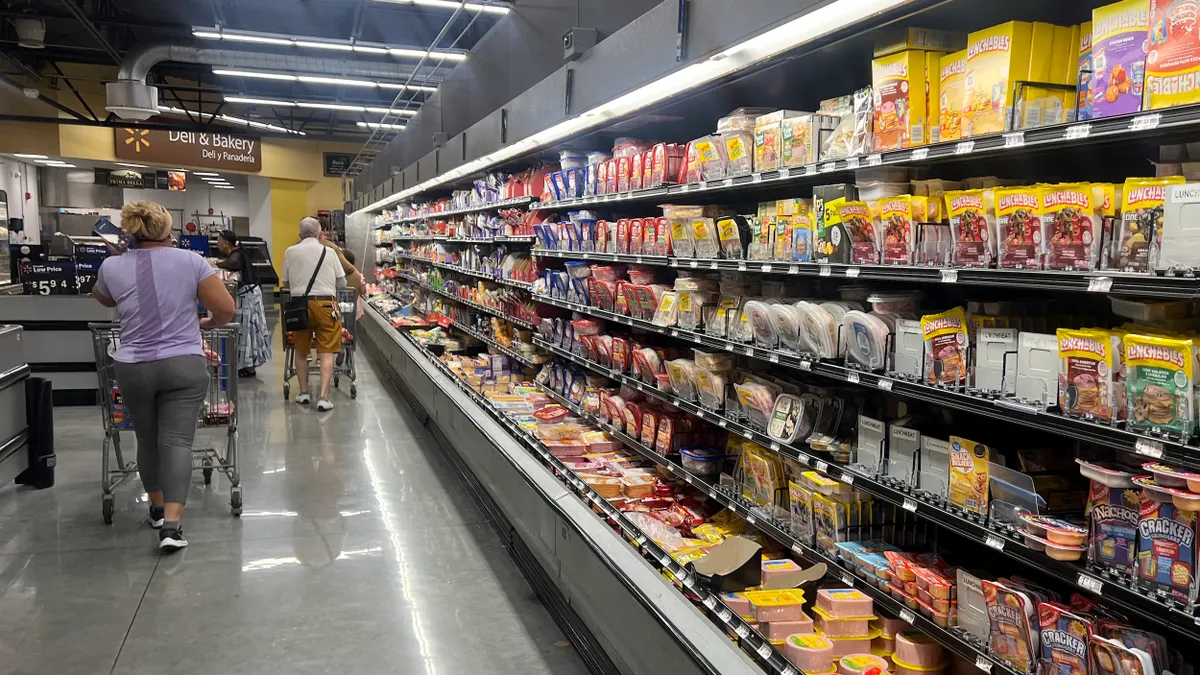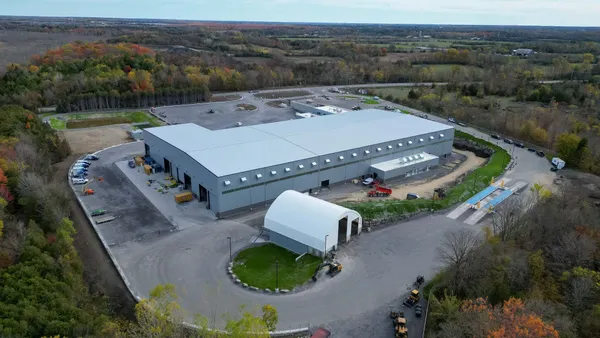UPDATE: Jan. 15, 2020: Visalia, California has found a buyer for an estimated 30,000 unwanted recycling carts after months of searching for a solution. According to a Jan. 6 memo, the city was "contacted by about a dozen recycling companies interested in the material" following local and national media attention.
After receiving three bids, the city selected AZS Dependable Inc. – located within Visalia itself – for a $51,085 proposal. AZS will transport the items to its warehouse, disassemble them, shred the material and sell the resin to be used in new products.
Dive Brief:
- Residents of Visalia, California may have an easier time sorting their waste and recycling into new carts but, as first reported by the Visalia Times Delta, the city may also have to spend more than $300,000 processing its retired carts. Despite contacting over 75 recycling companies throughout North America, the city has found no takers.
- The current plan is to grind down the estimated 30,000 carts – a unique split model for both waste and recyclables. Visalia anticipates this will result in about 750 tons of material. If contracted out, the work and disposal could have cost up to $472,000.
- Roughly 10,000 of the city's original carts, made by Toter, were converted into single-product versions and reused. But another 30,000 made by Bonar Plastics are presenting a challenge.
Dive Insight:
The city first adopted this split model design in 1989 to encourage residential recycling. Starting in March, Visalia pivoted to a three cart system for residents — one for trash, one for recycling and one for yard waste.
The city wanted to recycle the carts but couldn’t find any facility that would take them, according to Jim Ross, the solid waste manager for Visalia. For now, they’ve settled on renting a grinder for $36,000 a month and turning the bins into pellets. If Visalia can’t find a use for the ground material, they might be landfilled, Ross told Waste Dive. While there has been some talk of allowing residents to take carts for free to use as home storage, city officials haven't approved anything yet.
These kinds of carts are typically ground and reused to make identical products. In fact, if cart manufacturers claim that any percentage of their product is made of recycled materials, the company is referring to the re-use of former waste carts. The products are reliably made of HDPE and MDPE plastics, and are designed to last at least 10 years – the industry standard for cart durability.
What can keep these carts from being recyclable is if the plastics are cross-linked, said Scott Saunders, a general manager at KW Plastics Recycling Division. This kind of chemical reaction more firmly binds plastic molecules together and the process is irreversible. Though recycling facilities can melt and remold plastics treated this way, the melted version wouldn’t combine with other materials the facility processes, Saunders said.
But the split cans in Visalia aren't cross-linked, Jim Peterson, the head of sales at Bonar, told Waste Dive. These cans are made of MDPE. The body and the lid for the trash portion are all virgin plastic, while the divider and recycling lid are reground MDPE cart.
Bonar stopped producing those split bins around 2010, Peterson said, and he’s not sure why recycling facilities won’t take the products. It’s possible, he said, the companies don’t find it worthwhile to pull the reground plastic components off the virgin portions and process the two separately.
However, Peterson said the bins might still have value, as they are made of standard materials that all other waste carts incorporate. "There could be some value to that plastic for some other person downstream," he said.








